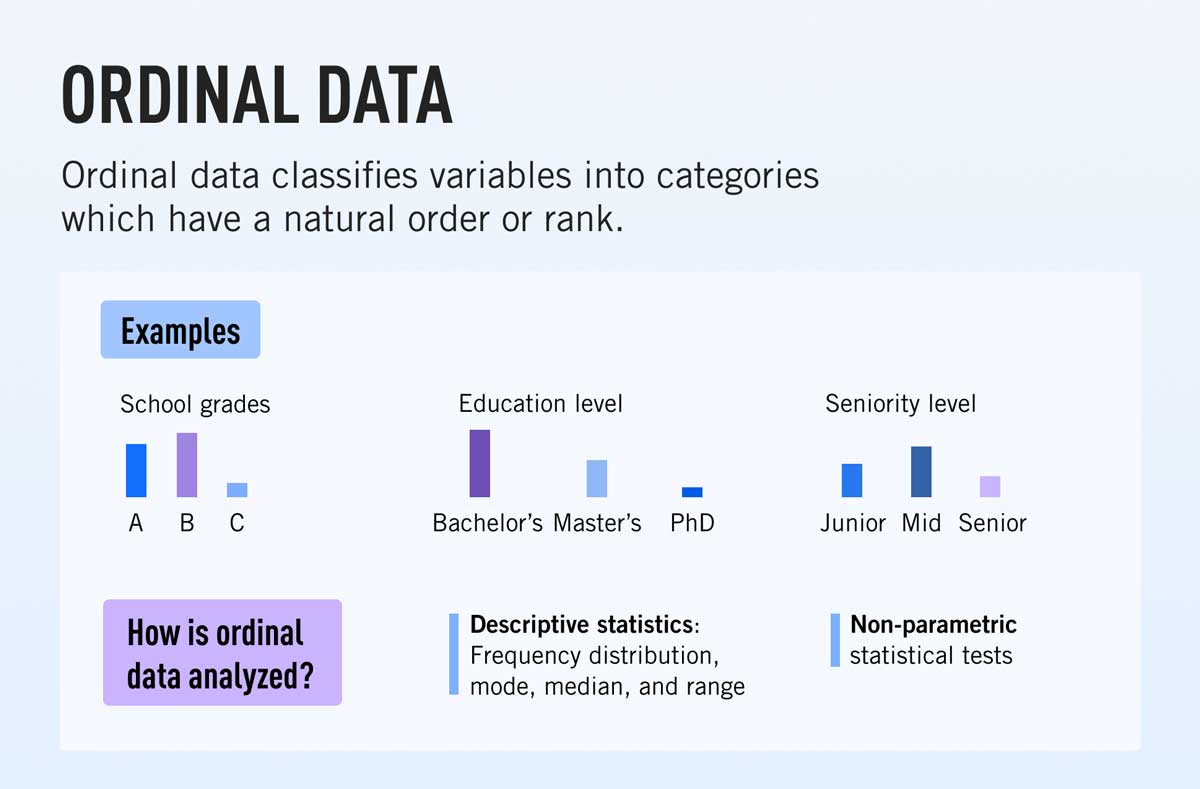Ordinal data is a type of data structure in computer programming and in cybersecurity fields. It is a collection of values that are assigned a certain relative ranking, or order, based on their specific values. It is often used to compare or sort values within a set or related data.
In mathematical terms, ordinal data is classified as a type of categorical data. This means that it is composed of elements that form a number of distinct categories, within which the values or elements are unordered. In contrast, numerical data are data points that are measured and ordered in terms of magnitude such as numbers.
Ordinal data also forms a subset of discrete data, which are data points that can be easily identified by being discrete from one another. Examples of discrete ordinal data include social science-based categorical data such as employment status (employed, unemployed or retired).
In computer programming, ordinal data can be used to indicate where different pieces of data or categories of data should be located within a system. For example, a programmer could use ordinal data to order categories like numbers, letters, symbols, images, and links. Another common use for ordinal data is in databases, where it is used to determine which data should always appear first when a query is returned.
In terms of cybersecurity, ordinal data can play an important role in recognizing patterns, and classifying potential threats or risks. By sorting and organizing data within categories, it can help to identify data that is related and potentially useful in combating cyber threats.
Generally speaking, ordinal data can be used in many different ways and in many different fields to order data or compare data in relation to each other. It is an important type of data structure and is often used in a variety of ways to support computer programming and cybersecurity.






